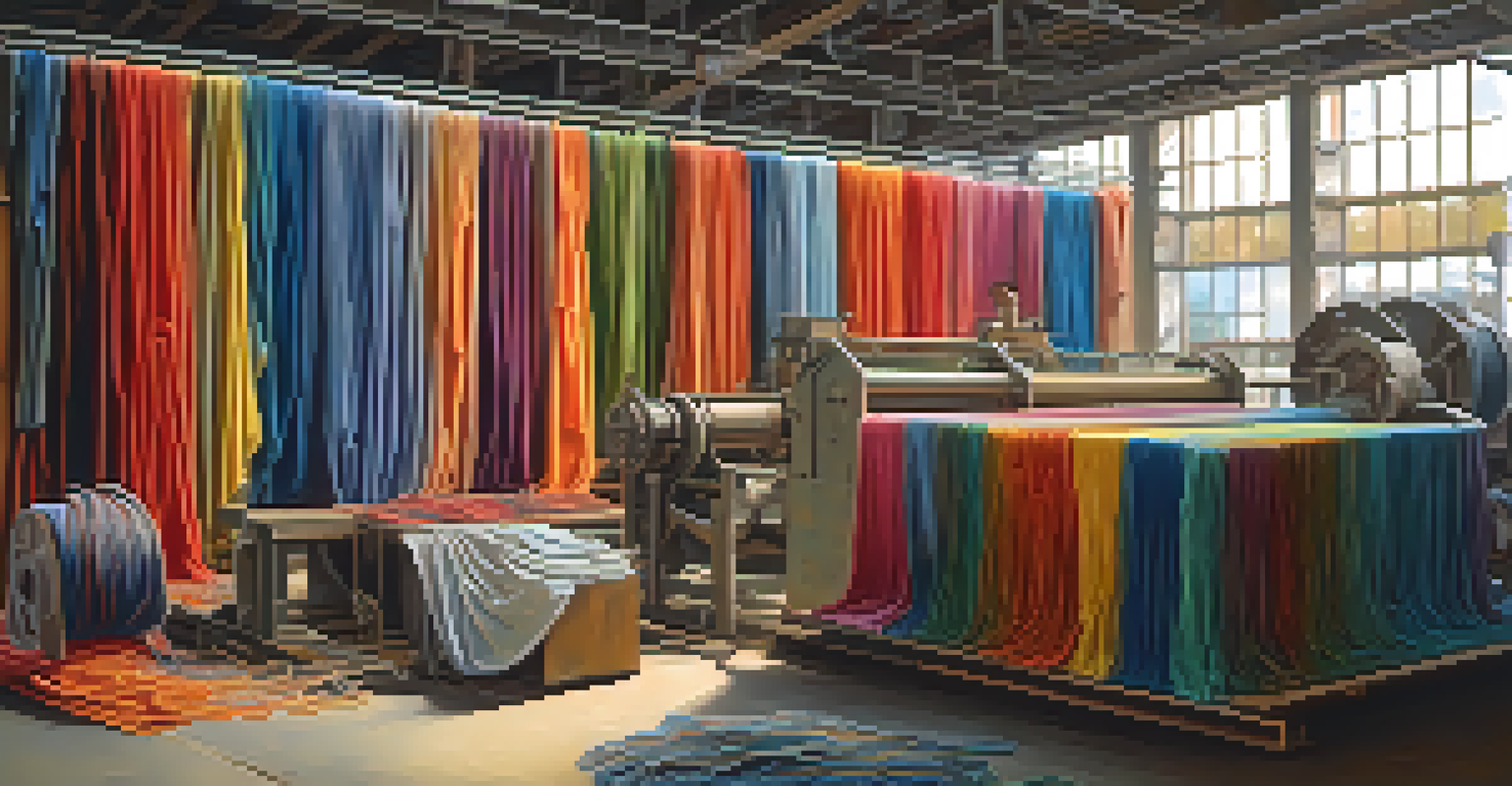The Carbon Footprint of Fashion: What You Need to Know

What is the Carbon Footprint of Fashion?
The carbon footprint of fashion refers to the total greenhouse gas emissions produced throughout the lifecycle of clothing. This includes everything from raw material extraction to manufacturing, distribution, and even disposal. In simple terms, it's a way to measure the environmental impact of our clothing choices.
Fashion is the armor to survive the reality of everyday life.
For instance, the production of a single cotton t-shirt can emit about 2.1 kg of CO2. This figure highlights just how much energy and resources go into creating everyday garments. By understanding this concept, we can make more informed choices about what we wear.
As consumers, recognizing the carbon footprint of fashion empowers us to seek more sustainable options. It urges us to consider not just the beauty of a garment but also its environmental cost.
The Stages of a Garment's Life Cycle
Every piece of clothing goes through several stages before it reaches our closets. These stages include raw material production, manufacturing, transportation, and disposal. Each phase contributes to the overall carbon footprint, often in surprising ways.

For example, the dyeing process, which adds color to fabrics, can be particularly energy-intensive and environmentally damaging. It often requires toxic chemicals and significant water resources, contributing heavily to CO2 emissions.
Fashion's Carbon Footprint Explained
The carbon footprint of fashion measures the total greenhouse gas emissions from clothing production, impacting our environment significantly.
Understanding these stages helps us see the bigger picture. By recognizing the environmental impacts at each phase, we can better appreciate the importance of sustainable practices in fashion.
The Impact of Fast Fashion on Carbon Emissions
Fast fashion has revolutionized the industry by offering trendy clothing at affordable prices. However, this model comes at a significant environmental cost, with rapid production leading to increased carbon emissions. The constant cycle of buying and discarding clothing exacerbates the problem.
Sustainability is not a trend, it's the future of fashion.
Studies show that fast fashion brands can produce up to 400% more clothing than traditional retailers. This surge in production not only strains resources but also leads to a higher carbon footprint.
As tempting as it may be to indulge in fast fashion, it’s crucial to consider its environmental implications. Choosing quality over quantity can make a considerable difference in reducing carbon emissions.
Sustainable Fashion: A Greener Alternative
Sustainable fashion offers an alternative to the detrimental cycle of fast fashion. This approach emphasizes eco-friendly materials, ethical production practices, and a focus on longevity. By supporting sustainable brands, we can help reduce the overall carbon footprint of fashion.
For example, brands that use organic cotton or recycled materials significantly lower their emissions compared to those that rely on conventional methods. Such practices not only benefit the environment but also promote fair labor standards.
Fast Fashion's Environmental Cost
The fast fashion model leads to increased carbon emissions due to rapid production cycles and excessive waste generation.
Choosing sustainable fashion doesn’t mean sacrificing style. Many eco-friendly brands offer chic and trendy options that cater to diverse tastes while remaining planet-friendly.
The Role of Consumers in Reducing Fashion's Carbon Footprint
As consumers, we hold the power to influence the fashion industry. By making conscious purchasing decisions, we can encourage brands to adopt more sustainable practices. This collective effort can lead to significant changes in the industry’s approach to carbon emissions.
Engaging in practices like buying second-hand clothing or participating in clothing swaps can make a noticeable impact. These actions not only reduce demand for new products but also extend the life of existing garments.
Ultimately, our choices matter. By prioritizing sustainability, we send a message to the fashion industry that we value the health of our planet.
The Importance of Transparency in Fashion Brands
Transparency is critical when evaluating the carbon footprint of fashion brands. Consumers increasingly demand to know how and where their clothing is made, as well as the environmental practices of the brands they support. This push for transparency can motivate companies to improve their sustainability efforts.
Brands that openly share their practices regarding material sourcing, labor conditions, and carbon emissions build trust with consumers. Transparency not only fosters loyalty but also encourages other companies to follow suit.
Consumer Choices Drive Sustainability
Consumers can influence the fashion industry towards sustainability by making conscious purchasing decisions and supporting eco-friendly brands.
By supporting brands that prioritize transparency, we contribute to a more sustainable fashion industry. This shift can help reduce carbon footprints across the board.
Innovations in Sustainable Fashion Technology
Innovation is driving the future of sustainable fashion, with technology playing a vital role in reducing carbon footprints. From advanced textile recycling methods to biodegradable materials, the industry is experiencing a shift towards greener solutions. These innovations are helping to mitigate the environmental impact of clothing production.
For instance, some companies are developing fabrics made from recycled plastics, turning waste into wearable items. This approach not only reduces emissions but also addresses the growing problem of plastic pollution.

As these technologies continue to evolve, they offer exciting possibilities for a more sustainable fashion landscape. Staying informed about these developments can inspire consumers to make eco-friendly choices.